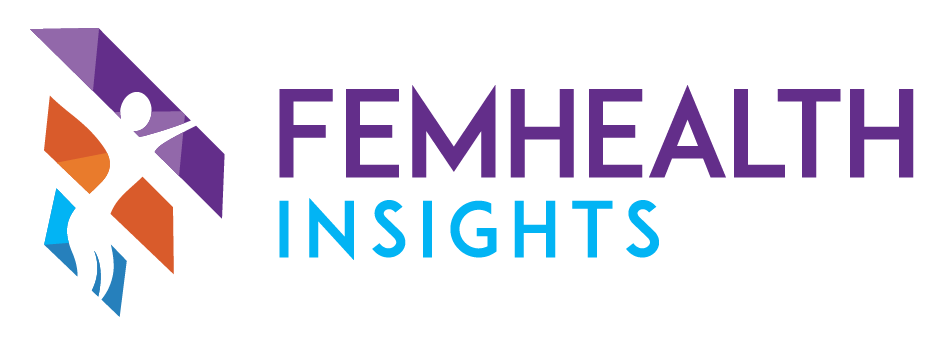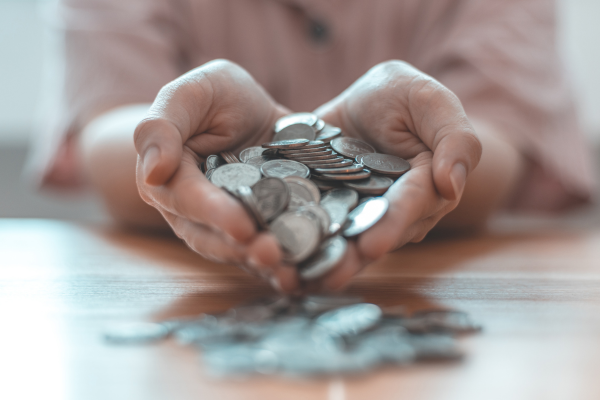What I Learned by Providing 1000 Menstrual Products at HLTH
Written by Dr. Brittany Barreto, Ph.D., Founder & Chief Innovation Officer, FemHealth Insights
In 2022, I attended the largest healthtech conference in North America, HLTH, held on the bustling Las Vegas Strip. Being a leader in women’s health, I was approached by several individuals complaining that there were no menstrual products in the bathrooms. This forced these conference-goers to leave the event and purchase products at the closest hotel gift shop.
This was obviously anything but convenient because the hotel convention halls are so large it takes over 20 minutes of walking to exit the facility. Moreover, if you have ever purchased a hygiene or convenience product from a hotel gift shop, you know that the prices are exorbitant. These menstruators then had to carry the entire box of products with them at the conference or try to stuff as many individual pads or tampons as they could in their conference bag alongside their business cards and laptops.
So this year, we took action. FemHealth Insights purchased over 1,000 tampons and pads to distribute for free at the 2023 HLTH conference which took place at the Las Vegas Convention Center. The good news this year was that this facility did have coin-operating menstrual product dispensers. The bad news was that if you did not have quarters with you, the closest convenience store was 0.7 miles away. So I put out the free menstrual products in the women’s* restrooms over two days of the conference and I learned some invaluable lessons.
Lesson 1: Conference Attendees Need Free Menstrual Products
While attending any conference, attendees expect certain amenities, such as water, restrooms, coffee, and seating. My HLTH conference gift bag came with many goodies including a water bottle, chapstick, and even a COVID-19 test. Surprisingly, I have never had a conference gift bag that contained a menstrual product.
As I refilled the menstrual product baskets throughout the two-day conference, I met women in the restroom who passionately thanked me for the service. They admitted that they had forgotten their menstrual products or were ill-prepared for their menstrual cycle. I even had my own surprise breakthrough bleeding whilst there! As I did not have any quarters with me, I was grateful for my own passion project.
Our initiative to provide free products relieved attendees' stress, ensuring that they did not have to resort to makeshift solutions like using toilet paper to avoid leaks or be forced to leave the conference to purchase products, wasting valuable time that could have been spent networking, pitching to investors, and building partnerships.
Yes, there were coin-operated dispensers in the women’s restroom that charge $0.50 per product. But having or finding 2 quarters to access a single, low-quality tampon or pad was an added burden. Carrying change is increasingly uncommon, and most women didn't have enough spare change to cover their requirements for the entire conference day.
Menstruating individuals typically require 3 to 6 tampons per day during their period, and with long conference hours, this need adds up. The extra challenge of traveling light while attending a conference makes it even more unlikely to have the necessary supplies on hand, and all the more important that products are provided at these events. How often do you have six to twelve quarters on you at a time?
Lesson 2: Period Poverty is Real
The absence of menstrual products at the conference exposed a harsh reality – period poverty is a real issue. All menstruators attending the conference, including those working as caterers and cleaning staff, faced the challenges of accessing affordable menstrual products. For those working the event, leaving may not have been an option, so of course these free products would have been a welcomed amenity.
But there was an interesting trend I found while replenishing the menstrual product baskets. The restrooms near the caterers and staff worker areas were always empty. It did not seem that that was because these were the most active bathrooms. In fact, many others had lines of women waiting to use the restroom while these facilities were tucked away from the main event stages. It had me wondering if the staff were taking multiple free products not only for their current bleed but for future cycles as well.
The financial burden of menstrual products is significant, with an average cost of $20 per cycle, adding up to $200 to $300 annually. This does not include purchasing additional products at work or outside the home if unexpected breakthrough bleeding occurs. In 2021, inflation further increased the prices, making it even harder for women to afford these essentials.
What if menstrual products were provided for free in restroom stalls alongside toilet paper? How much mental and financial burden could this relieve for all restroom goers? How could this benefit work productivity, conference participation, or family budgets? Although I cannot say for sure why these products were taken at higher rates in these bathrooms, I can say with confidence that people do not take menstrual products just to collect them for fun.
Lesson 3: Opportunity Lies in Meeting Women's Needs
By thinking about the needs of women at conferences, I realized that there's a significant opportunity for a positive impact. I spent a total of $125 to provide 1,000 menstrual products in 12 small plastic baskets with 12 printed flyers. This is a fraction of the cost of a typical trade show booth which averages $40K-100K USD. By addressing the needs of women, businesses and organizations have the potential to make a substantial difference with minimal investment.
Assuming every woman attendee used the restroom at least once, I reached over 4,000 women for just $0.03 each, offering them a tangible solution to a common problem. Even if they were not actively menstruating and just saw the signage as they washed their hands, this small investment represents the message that: "I see you, menstruator. Having menstrual products or dozens of quarters with you is not a burden you have to carry. Go focus on your professional goals for the conference!"
FemTech Focus podcast and FemHealth Insights newsletter received hundreds of new subscribers following this campaign. These are not only passive followers but ones who feel engaged, seen, and respected by our organization. I suspect these will be meaningful community members who will praise, support, and engage in the work we do to elevate sex-specific healthcare innovation.
Conclusion
Our experience of providing 1,000 menstrual products at HLTH exposed me to the harsh reality of period poverty, the need for free menstrual products at conferences, and the business opportunities that lie in meeting the needs of women. By providing accessible menstrual products, we can alleviate their burdens and promote gender equality.
As we attend conferences and engage in professional settings, let's remember that menstrual products are a basic necessity that should be readily available. By acknowledging and addressing this need, we can create a more inclusive and supportive environment for women, allowing them to focus on their goals and aspirations. Additionally, businesses that cater to women's needs have the potential to make a substantial impact with minimal investment, leaving a lasting impression on the community they serve. Periods are a natural part of a woman's life, and it's time we make sure they don't hinder success, productivity, or participation.
So what about HLTH 2024? Let’s have HLTH partner with FemHealth Insights to offer free menstrual products in all the attendee’s bags as well as additional free products in the restrooms. I know of a few dozen innovative menstrual product companies that would love to participate by providing their sustainable, effective, and cost-effective products.
*Menstruators also use the men, family, and gender-neutral bathrooms. I hope next year to have a more formal partnership with HLTH to be able to distribute products to all menstruators regardless of the restroom they use.
About the Author:
Dr. Brittany Barreto, PH.D., is Founder and Chief Innovation Officer at FemHealth Insights. Every day, Brittany dedicates her work to advancing women’s health innovation by equipping key stakeholders with data-driven insights and strategic advice on the FemHealth market. She is also host of the FemTech Focus Podcast - the number 1 femtech podcast globally.




